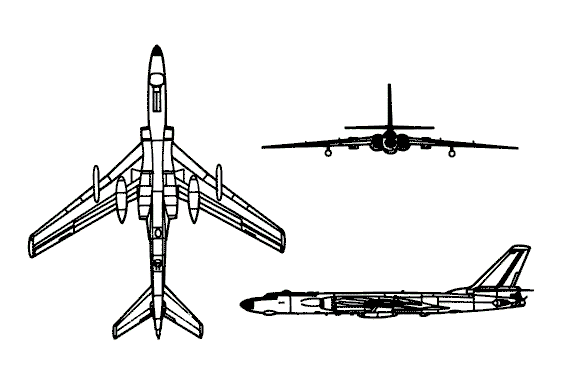



H-6 [Tu-16 BADGER]
The PLA Air Force is equipped itself with several dozen of special-purpose electronic
aircraft, including a few specially modified Hongdian-6 medium bombers which have been equiped to support electronic warfare operations. However, the PLAAF remains some 15 years behind world standards in this field.
In January 1959 China received two TU-16 BADGER medium jet bombers from the USSR. China began producing the BADGER at the Hsian Airframe Plant in 1968 and has 32 BADGERs in the operational inventory by 1972. The H-6D maritime bomber which carries the YJ-6(c601) anti-ship missiles under its wings and is equiped with sea-searching radar under nose, began development in 1975 and made its first flight in 1981.

FEATURES
The wings of the Badger are mid-mounted, swept-back, and tapered with blunt tips. There are fences on top of the wings and its landing gear pods extend beyond the wings� trailing edges.
The Badger's engine(s) are two turbojets mounted in wing roots which extend beyond the leading and trailing edges of the wing root. The engines also have round air intakes. Its fuselage is long, slender, and bulging where the engines are mounted and tapered to the tail. It has a round, glassed-in nose and a stepped cockpit. The tail is swept-back, tapered fin and flats with blunt tips. The Badger also has a tail gunner compartment. All models of Badger are equipped for aerial refueling. The Badger is used by the CIS, Egypt, Iraq, People�s Republic of China (H-6), Ukraine.
Sources and Resources
http://www.fas.org/irp/world/china/sys/h-6.htm
Created by John Pike
Maintained by Webmaster
Updated Thursday, July 02, 1998 6:34:53 PM







